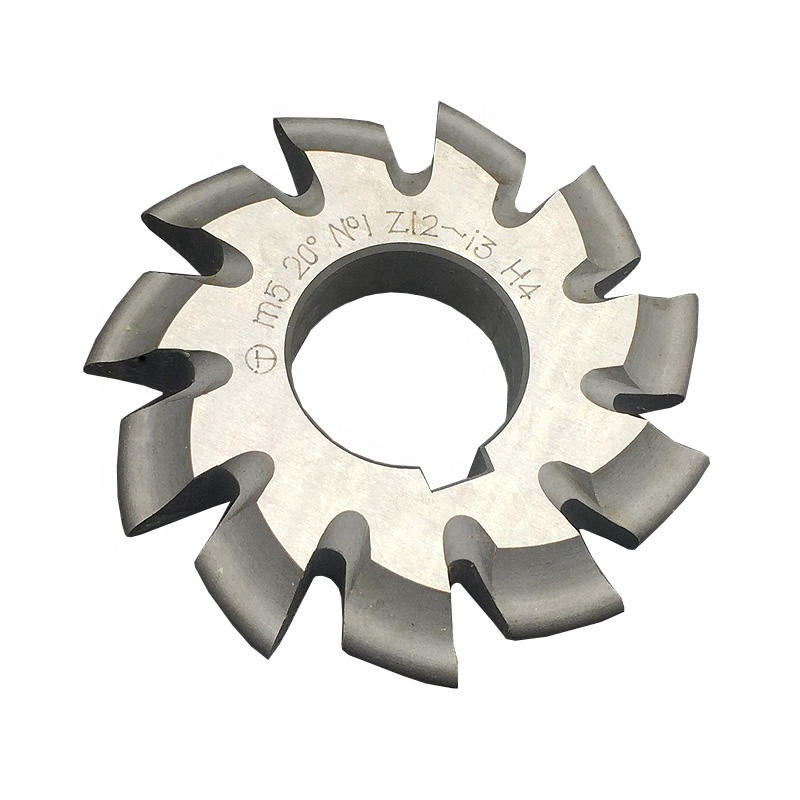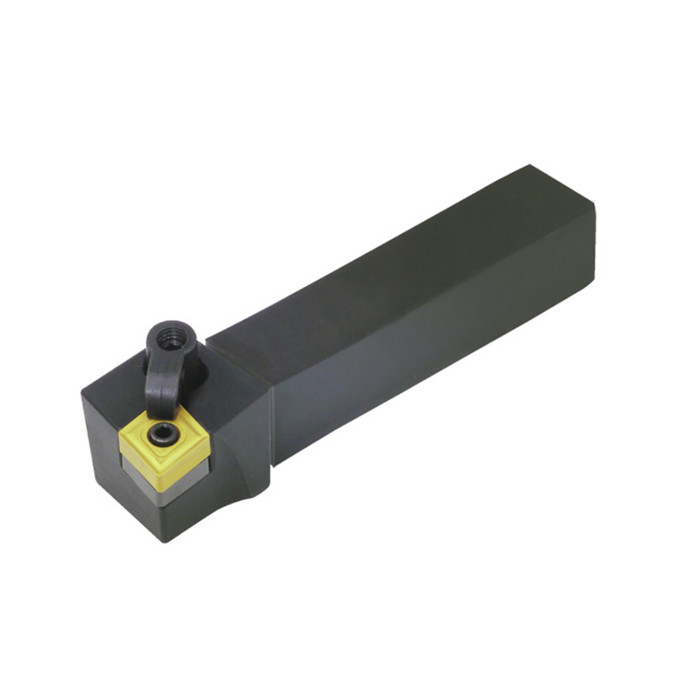High-Quality Side Milling Cutter
High-quality side milling cutters are essential tools for machining complex shapes and achieving precise surface finishes. This guide explores the various types, materials, applications, and selection criteria for these cutters, helping you choose the right tool for your specific needs. We also delve into best practices for maximizing their performance and lifespan.
Understanding Side Milling Cutters
A side milling cutter, also known as a slot cutter or keyseat cutter, is a type of milling tool designed to cut slots, grooves, and keyways along the side of a workpiece. They are characterized by cutting edges on their periphery and often on one or both faces.
Types of Side Milling Cutters
- Plain Side Milling Cutters: These have cutting teeth only on the periphery.
- Half Side Milling Cutters: These have teeth on one side face and periphery.
- Full Side Milling Cutters: These feature cutting teeth on both side faces and the periphery, allowing for wider cuts.
- Staggered Tooth Side Milling Cutters: These cutters have alternating teeth on the periphery, providing improved chip evacuation and reduced chatter.
- Shell Mills: Large diameter cutters mounted on a stub arbor.
Materials Used in Side Milling Cutters
The material of a side milling cutter greatly influences its performance and longevity. Common materials include:
- High-Speed Steel (HSS): Cost-effective and suitable for general-purpose milling of softer materials.
- Cobalt HSS (HSS-Co): Offers improved heat resistance and hardness compared to standard HSS, extending tool life.
- Carbide: Provides exceptional hardness, wear resistance, and heat resistance, making it ideal for machining harder materials and high-speed applications.
- Powdered Metal (PM) Super High-Speed Steel: Offers a combination of high hardness, toughness, and wear resistance, surpassing conventional HSS tools.
Applications of High-Quality Side Milling Cutters
High-quality side milling cutters are used in a wide range of industries and applications, including:
- Keyway Cutting: Creating precise keyways in shafts and hubs for transmitting torque.
- Slotting: Machining slots for various purposes, such as accommodating fasteners or creating channels.
- Grooving: Cutting grooves for seals, O-rings, or other components.
- Contouring: Shaping the sides of workpieces to create complex profiles.
- Gear Cutting: Some specialized side milling cutters are designed for gear manufacturing.
Selecting the Right Side Milling Cutter
Choosing the appropriate side milling cutter is crucial for achieving optimal results. Consider the following factors:
- Workpiece Material: Select a cutter material that is compatible with the material being machined. Carbide is generally preferred for harder materials, while HSS or cobalt HSS may suffice for softer materials.
- Cutting Speed and Feed Rate: Determine the appropriate cutting speed and feed rate based on the workpiece material, cutter material, and machine capabilities.
- Cutter Diameter and Width: Choose a cutter diameter and width that are appropriate for the desired slot or groove dimensions.
- Number of Teeth: A higher number of teeth generally results in a smoother surface finish, but may also increase the risk of chatter.
- Cutter Coating: Coatings such as TiN (Titanium Nitride), TiAlN (Titanium Aluminum Nitride), and DLC (Diamond-Like Carbon) can improve wear resistance, reduce friction, and extend tool life.
- Machine Rigidity: The rigidity of the milling machine influences the cutter's performance. Less rigid machines may require lower cutting speeds and feed rates to avoid chatter.
Optimizing Performance and Lifespan
To maximize the performance and lifespan of your high-quality side milling cutter, follow these best practices:
- Proper Clamping: Securely clamp the workpiece to minimize vibration and ensure accurate cutting.
- Correct Cutting Parameters: Use the recommended cutting speed and feed rate for the workpiece material and cutter material.
- Adequate Coolant: Apply coolant to dissipate heat and lubricate the cutting zone.
- Sharp Cutting Edges: Regularly inspect the cutter for wear and sharpen or replace it as needed.
- Chip Evacuation: Ensure proper chip evacuation to prevent chip recutting and tool damage.
- Tool Maintenance: Clean and lubricate the cutter after each use.
Examples of High-Quality Side Milling Cutters
Several manufacturers offer high-quality side milling cutters known for their precision, durability, and performance. While specific models may vary, here are some representative examples:
- Sandvik Coromant CoroMill 331: Known for its versatility and ability to perform a wide range of grooving and parting operations. (Source: Sandvik Coromant)
- Kennametal Keyseat Cutters: Designed specifically for keyway cutting, offering precise dimensions and long tool life. (Source: Kennametal)
- Mitsubishi Materials Side Milling Cutters: Offer a wide range of options for various materials and applications, known for their innovative geometries and coatings. (Source: Mitsubishi Materials)
Wayleading Tools: Your Partner for Precision Milling
At Wayleading Tools, we understand the importance of using high-quality side milling cutters for achieving precision and efficiency in your machining operations. We offer a comprehensive selection of milling tools designed to meet the diverse needs of our customers.
Troubleshooting Common Issues
Even with high-quality side milling cutters, issues can sometimes arise. Here are some common problems and their potential solutions:
- Chatter: Reduce cutting speed, increase feed rate, ensure workpiece rigidity, and consider using a cutter with a different tooth geometry.
- Poor Surface Finish: Increase cutting speed, reduce feed rate, use a cutter with more teeth, and ensure proper coolant application.
- Premature Tool Wear: Reduce cutting speed, ensure proper coolant application, select a cutter material better suited for the workpiece material, and check for proper machine alignment.
- Chip Recutting: Improve chip evacuation by using a coolant with higher pressure or adjusting the cutting parameters.
The Future of Side Milling Cutters
The field of side milling cutters continues to evolve, with advancements in materials, coatings, and geometries driving improved performance and efficiency. Look for future developments in areas such as:
- Advanced Coatings: New coatings will offer even greater wear resistance, heat resistance, and lubricity.
- Optimized Geometries: Cutter geometries will be further optimized for specific materials and applications, resulting in improved cutting performance and tool life.
- Smart Tools: Integration of sensors and data analytics will enable real-time monitoring of tool wear and performance, allowing for proactive maintenance and optimization.
Conclusion
Investing in a high-quality side milling cutter is a crucial step towards achieving precise and efficient machining operations. By understanding the different types of cutters, materials, applications, and selection criteria, you can choose the right tool for your specific needs and maximize its performance and lifespan. Remember to follow best practices for clamping, cutting parameters, coolant application, and tool maintenance. With the right tools and techniques, you can achieve exceptional results in your milling operations.
Related products
Related products
Best selling products
Best selling products-
 Precision Vernier Caliper With Nib Style Jaws Of Metric & Imperial For Industrial
Precision Vernier Caliper With Nib Style Jaws Of Metric & Imperial For Industrial -
 Type N Inverted Cone Tungsten Carbide Rotary Burr
Type N Inverted Cone Tungsten Carbide Rotary Burr -
 HSS Module Involute Gear Cutters With PA20 And PA14-1/2
HSS Module Involute Gear Cutters With PA20 And PA14-1/2 -
 Precision IP54 Digital Outside Micrometer Of Inch & Metric With Data Output
Precision IP54 Digital Outside Micrometer Of Inch & Metric With Data Output -
 Precision Digital Bore Guage From 6-450mm Range
Precision Digital Bore Guage From 6-450mm Range -
 Precision IP65 Digital Outside Micrometer Of Inch & Metric With Data Output
Precision IP65 Digital Outside Micrometer Of Inch & Metric With Data Output -
 MCLN Indexable Turning Tool Holder With Right And Left Hand
MCLN Indexable Turning Tool Holder With Right And Left Hand -
 HSS Metric Square Tool Bit With Industrial Type
HSS Metric Square Tool Bit With Industrial Type -
 Dual Wheel Knurling Tools With Diamond Pattern For Industrial Type
Dual Wheel Knurling Tools With Diamond Pattern For Industrial Type -
 QM ACCU-Lock Precision Machine Vises With Swivel Base
QM ACCU-Lock Precision Machine Vises With Swivel Base -
 DIN6537L Metric Solid Carbide Twist Drill With Internal Coolant & External Coolant
DIN6537L Metric Solid Carbide Twist Drill With Internal Coolant & External Coolant -
 Precision 17pcs Angle Blocks Set With High Quality Type
Precision 17pcs Angle Blocks Set With High Quality Type











